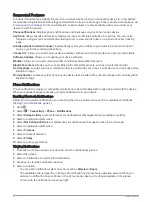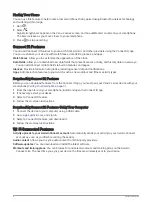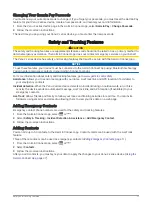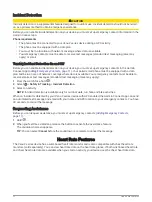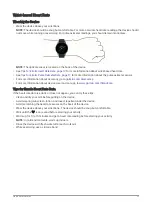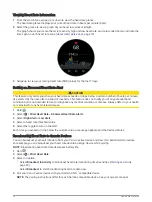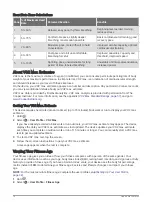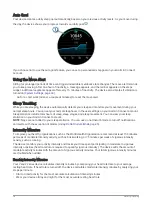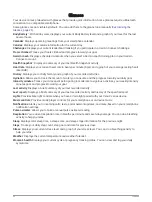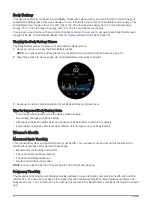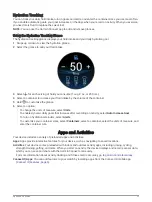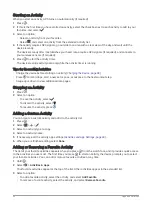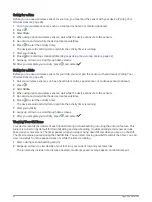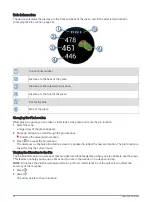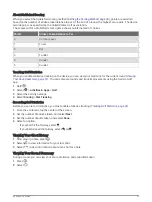
Heart Rate Zone Calculations
Zone
% of Maximum Heart
Rate
Perceived Exertion
Benefits
1
50–60%
Relaxed, easy pace, rhythmic breathing
Beginning-level aerobic training,
reduces stress
2
60–70%
Comfortable pace, slightly deeper
breathing, conversation possible
Basic cardiovascular training, good
recovery pace
3
70–80%
Moderate pace, more difficult to hold
conversation
Improved aerobic capacity, optimal
cardiovascular training
4
80–90%
Fast pace and a bit uncomfortable,
breathing forceful
Improved anaerobic capacity and
threshold, improved speed
5
90–100%
Sprinting pace, unsustainable for long
period of time, labored breathing
Anaerobic and muscular endurance,
increased power
About VO2 Max. Estimates
VO2 max. is the maximum volume of oxygen (in milliliters) you can consume per minute per kilogram of body
weight at your maximum performance. In simple terms, VO2 max. is an indication of cardiovascular strength
and should increase as your level of fitness improves.
On the device, your VO2 max. estimate appears as a number and description. On your Garmin Connect account,
you can view additional details about your VO2 max. estimate.
VO2 max. data is provided by Firstbeat Analytics. VO2 max. analysis is provided with permission from The
Cooper Institute
®
. For more information, see the appendix (
VO2 Max. Standard Ratings, page 57
), and go to
.
Getting Your VO2 Max. Estimate
The device requires heart rate data and a timed, (up to 15 minutes) brisk walk or run to display your VO2 max.
estimate.
1 Hold .
2 Select > User Profile > VO2 Max.
If you have already recorded a brisk walk or run outdoors, your VO2 max. estimate may appear. The device
displays the date your VO2 max. estimate was last updated. The device updates your VO2 max. estimate
each time you complete an outdoor walk or run of 15 minutes or longer. You can manually start a VO2 max.
test to get an updated estimate.
3 To start a VO2 max. test, tap the screen.
4 Follow the on-screen instructions to get your VO2 max. estimate.
A message appears when the test is complete.
Viewing Your Fitness Age
Your fitness age gives you an idea of how your fitness compares with a person of the same gender. Your
device uses information, such as your age, body mass index (BMI), resting heart rate data, and vigorous activity
history to provide a fitness age. If you have a Garmin Index
™
scale, your device uses the body fat percentage
metric instead of BMI to determine your fitness age. Exercise and lifestyle changes can impact your fitness
age.
NOTE: For the most accurate fitness age, complete the user profile setup (
).
1 Hold .
2 Select > User Profile > Fitness Age.
16
Heart Rate Features



